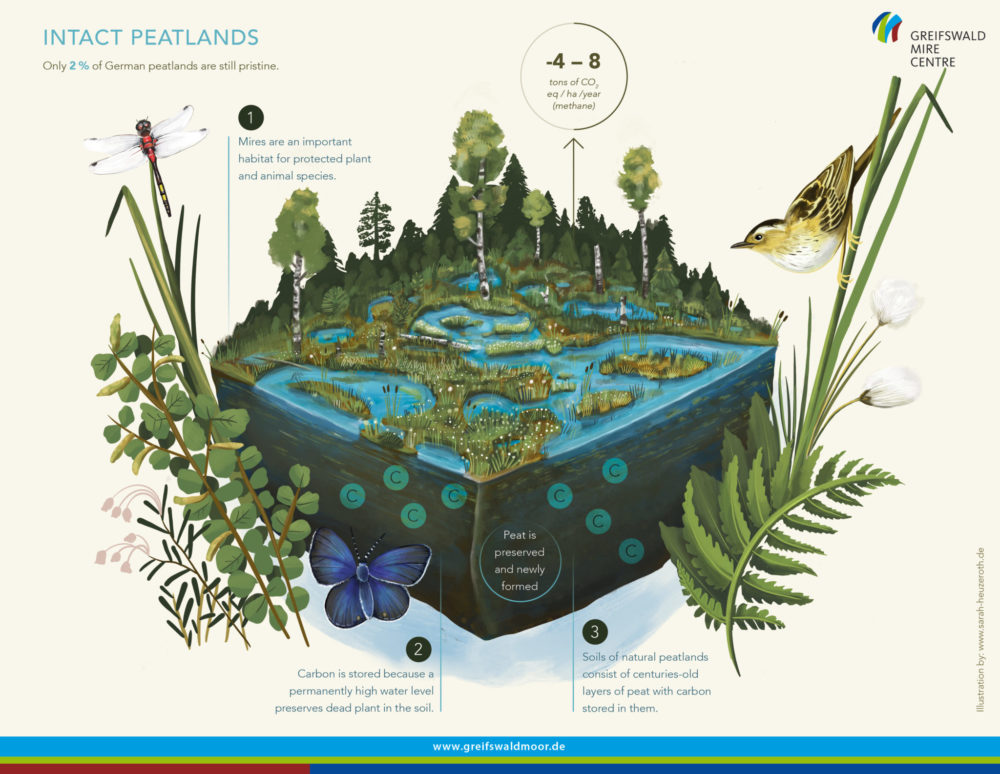
Opportunities for Paludiculture in the CAP
-
Peatlands
Central to the final decision of EU legislative bodies for the Common Agricultural Policy (CAP) 2023-27 is the recognition that all CAP subsidies (both Pillar 1 and Pillar 2) need to contribute to a more sustainable agricultural sector in Europe. The EU’s largest public funding mechanism thus presents an exciting opportunity to put climate and ecological action at the heart of European farming in this pivotal decade. However, the flexibility that this new CAP offers Member States, to adjust the legislation according to their national and regional needs in CAP Strategic Plans, means that this policy could likewise be used to maintain damaging business-as-usual practices. This paper details some of the adjustments that Member States can make in their CAP Strategic Plans to make them as ambitious and scientifically-sound as possible.
One of the most effective Nature-based Solutions for climate mitigation, adaptation and other environmental benefits is the rewetting of peatlands. Unbeknownst to most, healthy peatlands are the most space efficient terrestrial long-term carbon store and sink in our planet’s biosphere. Despite taking up just 3 percent of the planet’s land-surface area, peatlands store twice the carbon as all forest biomass. However, when peatlands are drained and degraded for agriculture, forestry, horticultural extraction or energy, these areas release huge amounts of CO2 emissions. Within the EU, this accounts for roughly 5% of the total EU greenhouse gas (GHG) emissions, making the EU the second largest emitter of GHG from drained peatlands globally after Indonesia.
Shifting from drainage-based agriculture to paludiculture is one of the biggest carbon farming game-changers of this decade. Paludiculture is not only key for a bio-based circular economy offering future resilient and profitable business-models for farmers and landowners, but it is also key for climate, biodiversity, water security, flood management and fire protection. Food production might be limited, but high quality biomass for fibres, construction materials, substrates in horticulture etc. can be produced in a potential carbon-negative way. By rewetting just 3% of the EU agricultural land, the EU can cut up to 25% of GHG emissions from EU agriculture and agricultural land use (see Annex I below).
Definition – Paludiculture is the productive land use of wet and rewetted peatlands that preserves the peat soil and thereby minimizes CO2 emissions and subsidence.
Key messages:
1) A wide range of paludiculture crops should be listed as eligible for direct payments under national CAP Strategic Plans, notwithstanding their listing under Annex 1 to the TFEU.
2) i) If a paludiculture site qualifies for payments as ‘eligible hectares’, the application for payments by farmers should have as little extra bureaucratic procedures as possible to encourage many farmers to take it up.
ii) CAP Strategic Plans should have clear and simple requirements for eligibility of areas to make it clear for
farmers and landowners to pre-emptively see if they can apply for this option.
3) Member States should clearly state in their CAP Strategic Plans that paludiculture and peatland rewetting is recognised as an eco-scheme option and attractively program them to encourage voluntary uptake.
4) Pillar II instruments should be taken into account within National CAP Strategic Plans to make paludiculture implementation possible.
5) Conditionality standard GAEC 2 should set higher ambitions beyond just keeping the destructive status quo of peatland utilisation. Data gaps on peatland distribution and status may be found in administrative datasets; these should be updated with R&D efforts as soon as possible and implementation not delayed to 2025.

This joint position paper with The Michael Succow Foundation was supported by the Griefswald Mire Center, CMoK, OTOP, Eurosite, BirdLife, ARC2020, ELFond, EuroNatur, LUKE, WWT, NUI Galway, SOMPA & Pelkiufondas.
